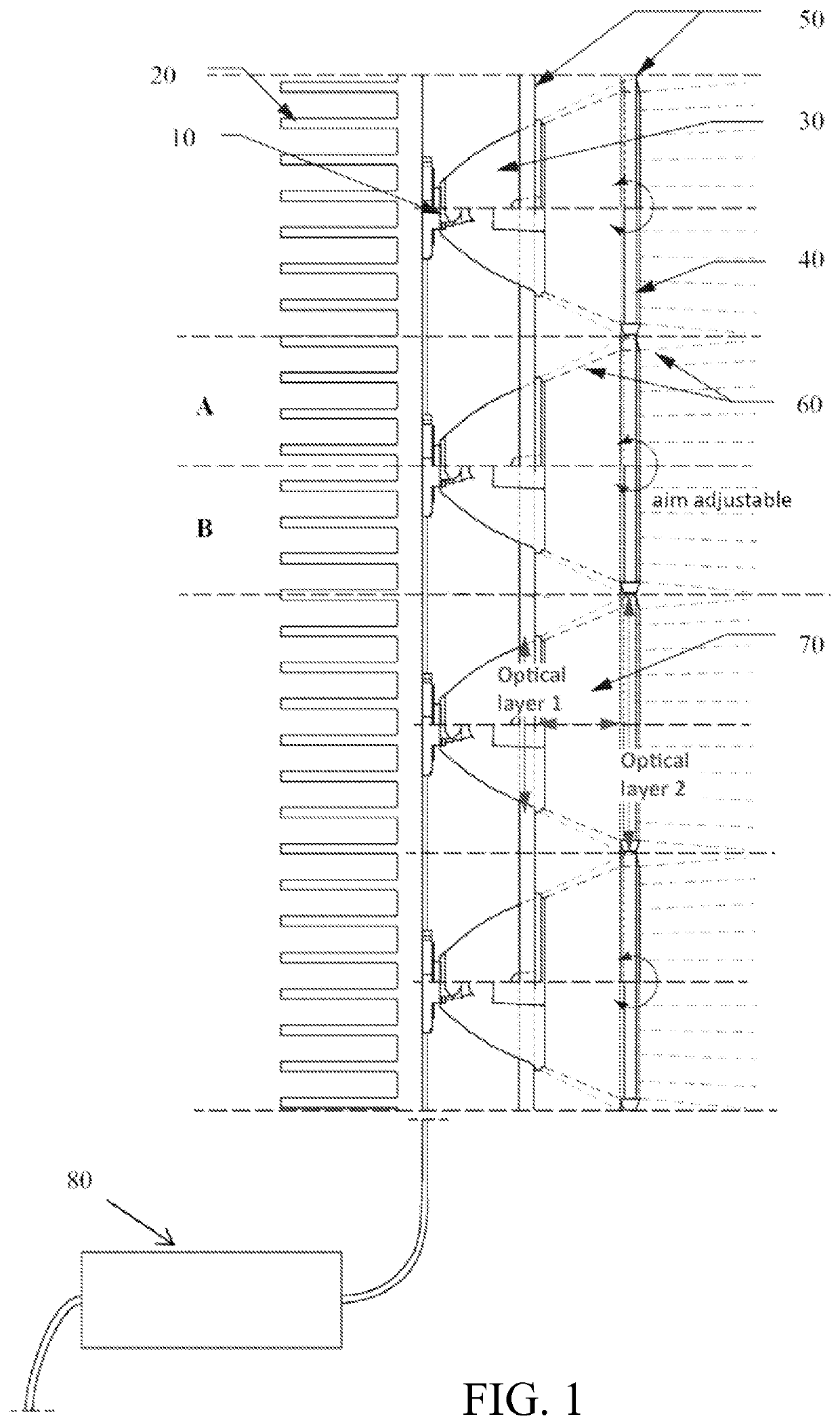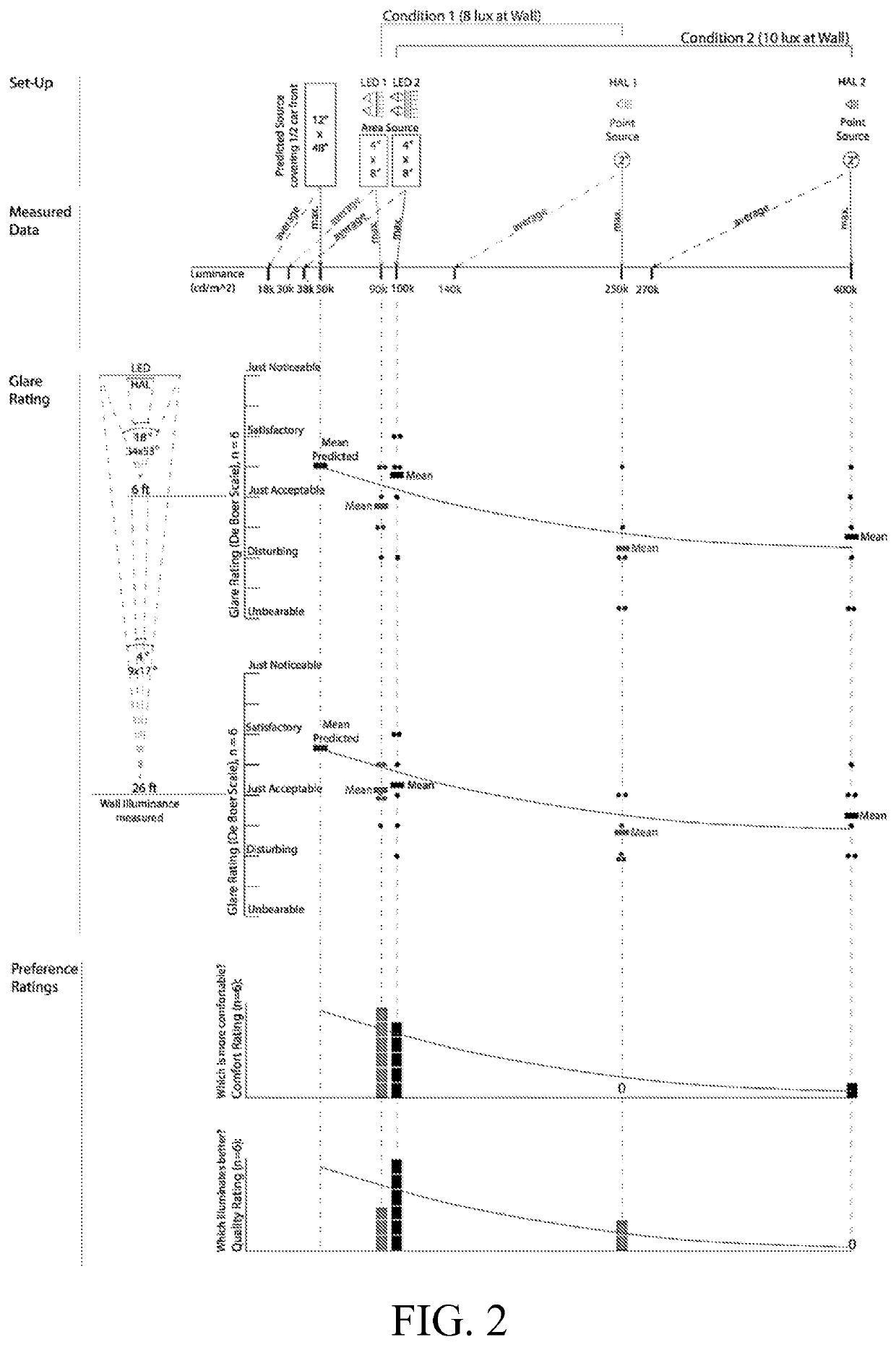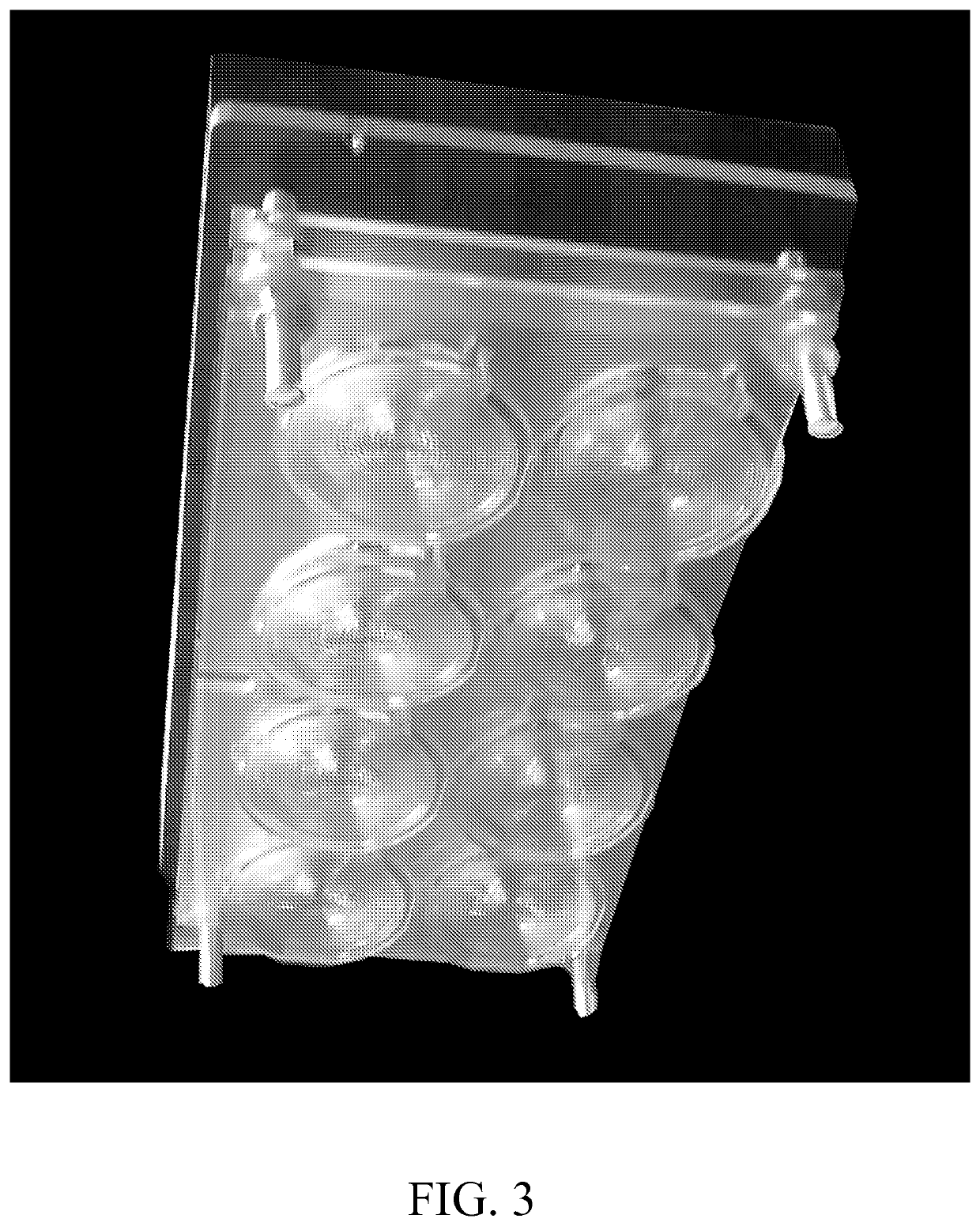Low luminance lighting
a low luminance, lighting technology, applied in the direction of light source semiconductor devices, fixed installations, lighting and heating apparatus, etc., can solve the problems of high glare, discomfort and distraction, glare from lights, etc., to achieve low luminance, reduce glare, maintain the controllability, directionality, and efficiency of a single point source
- Summary
- Abstract
- Description
- Claims
- Application Information
AI Technical Summary
Benefits of technology
Problems solved by technology
Method used
Image
Examples
embodiment 1
[0045]A lighting system, comprising:
[0046]a plurality of light sources;
[0047]a first optical layer on the plurality of light sources; and
[0048]a second optical layer over the first optical layer,
[0049]wherein the first optical layer is configured to condense light from at least one light source of the plurality of light sources to a smaller beam spread.
embodiment 2
[0050]The lighting system according to embodiment 1, wherein the first optical layer is configured to condense light from all of the light sources of the plurality of light sources to a smaller beam spread.
embodiment 3
[0051]The lighting system according to embodiment 2, wherein the first optical layer is configured to condense light from all of the light sources of the plurality of light sources to a beam spread that matches a full area of the second optical layer.
PUM
 Login to View More
Login to View More Abstract
Description
Claims
Application Information
 Login to View More
Login to View More - R&D
- Intellectual Property
- Life Sciences
- Materials
- Tech Scout
- Unparalleled Data Quality
- Higher Quality Content
- 60% Fewer Hallucinations
Browse by: Latest US Patents, China's latest patents, Technical Efficacy Thesaurus, Application Domain, Technology Topic, Popular Technical Reports.
© 2025 PatSnap. All rights reserved.Legal|Privacy policy|Modern Slavery Act Transparency Statement|Sitemap|About US| Contact US: help@patsnap.com



